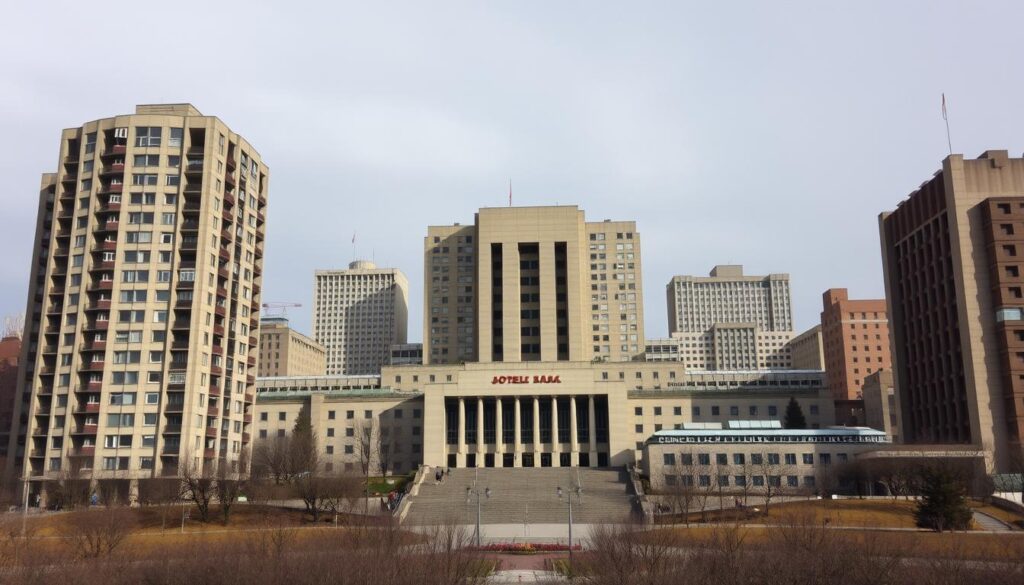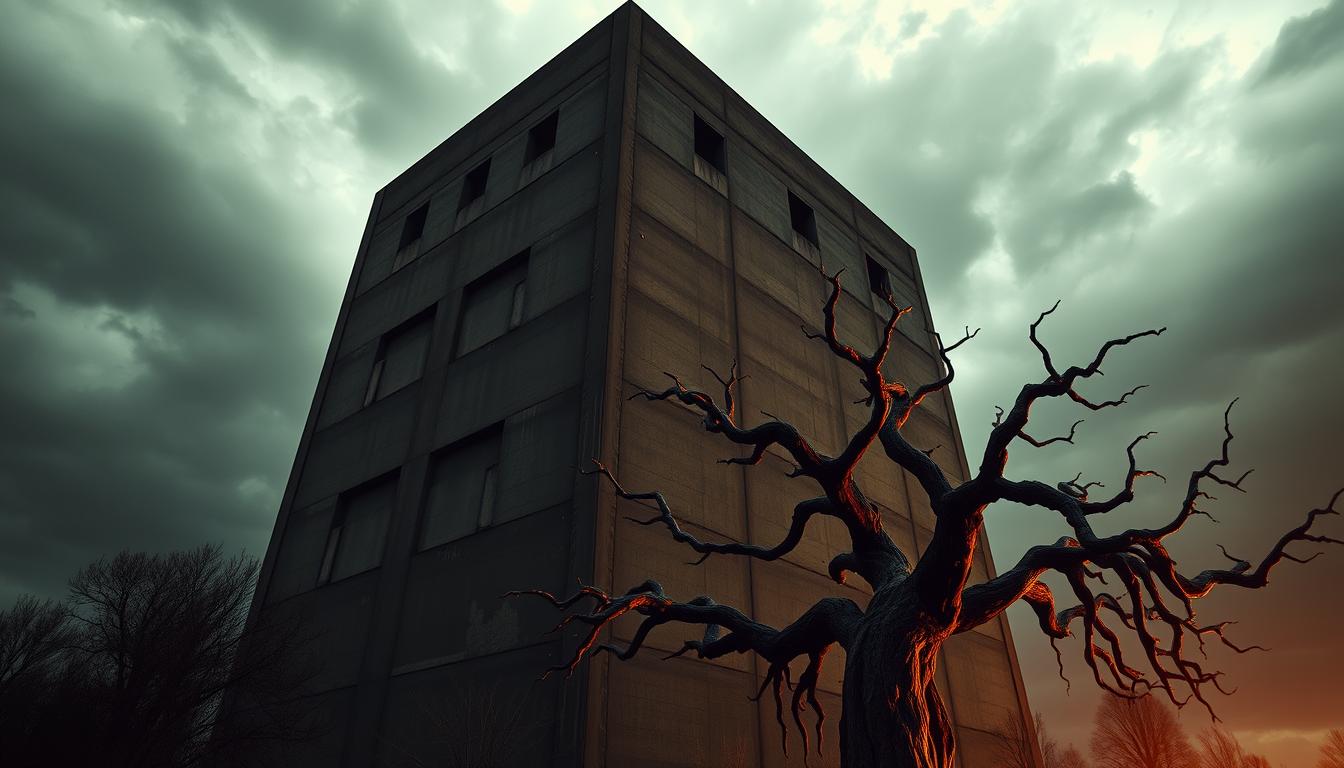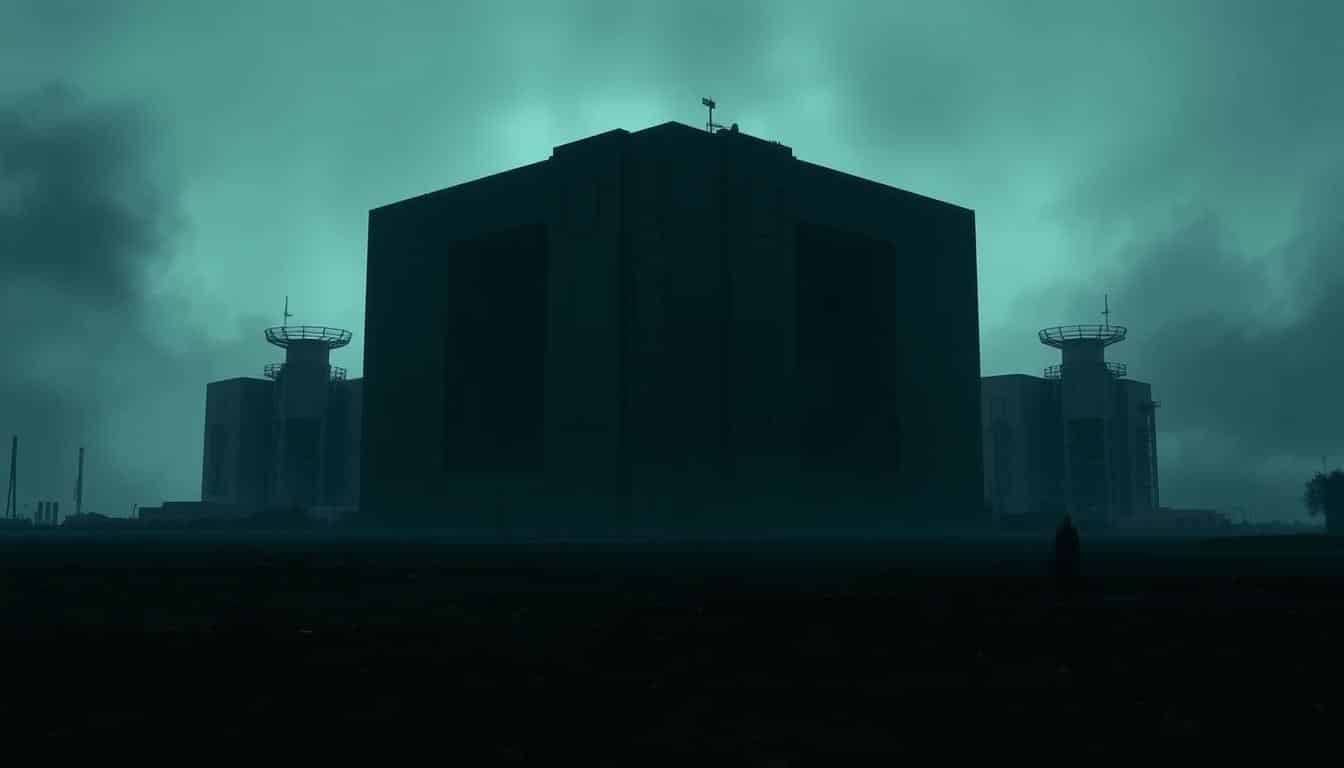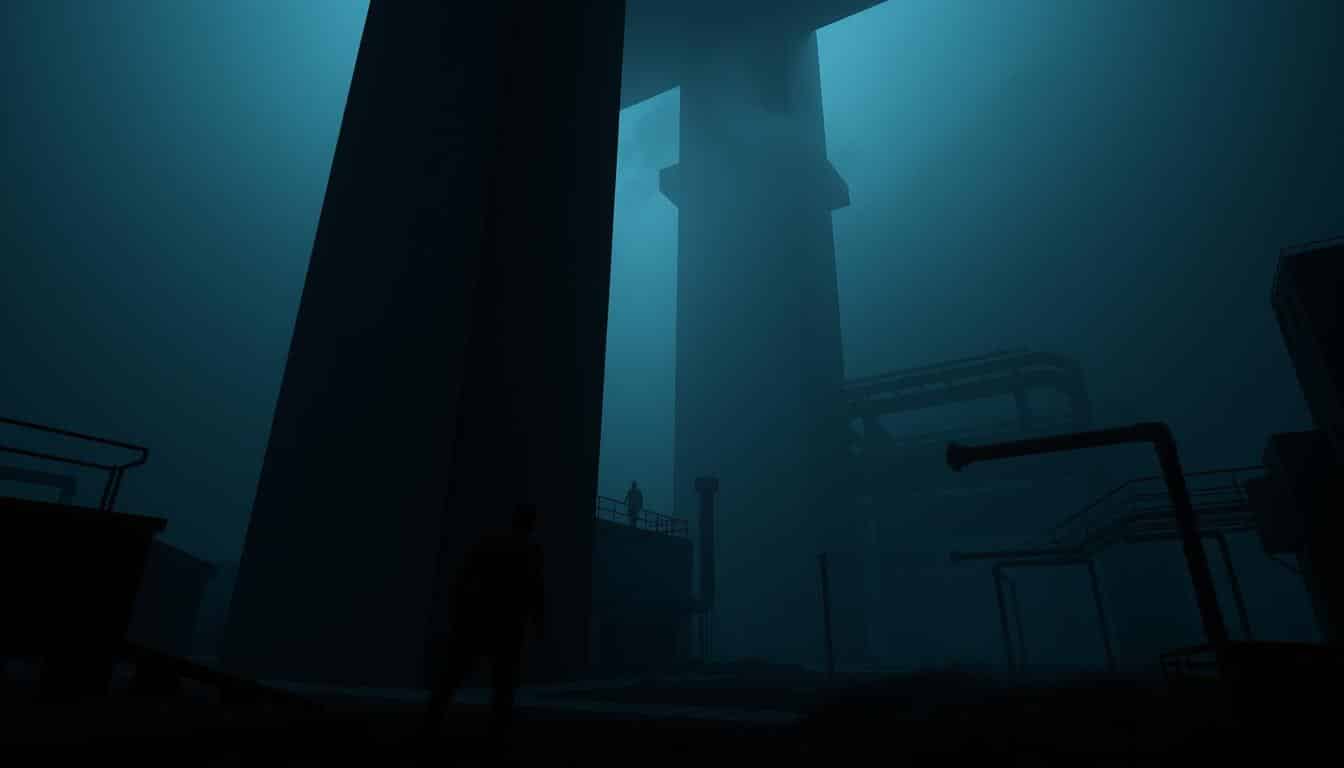Soviet Brutalist architecture shapes horror games’ look with its massive concrete structures and simple, stark style. Originating in the mid-20th century, it gives off a sense of coldness and power. This matches the fear and loneliness in psychological horror games.
Game developers use these scary visuals to make the game world more real and touch players deeper. By blending Soviet Brutalism into horror games, the stories get more intense. Plus, it changes how these games look in a big way.
The Rise of Soviet Brutalism in Architecture
From the 1950s to the 1970s, Soviet Brutalism became popular. It was a time of big changes in politics and society. The style is part of the Cold War’s architectural trends. It focused on simple and useful designs, mostly using raw concrete.
Many public buildings like schools and government offices showed off this style’s features.
The idea was that buildings should be practical above all. Thus, Brutalist buildings were often plain and sturdy-looking. Some people didn’t like this look, finding it too cold or unfriendly. But today, there’s a growing interest in their history and design.

Defining Characteristics of Soviet Brutalism
Soviet Brutalism stands out for its huge, uniform buildings and lots of bare concrete. It puts practicality before beauty, usually looking grand but simple. This kind of architecture is known for its square shapes and repeating patterns.
Key design features include:
- Massive scale, embodying grand ideals of the time
- Rejection of decorative elements, emphasizing raw materials
- Spaces crafted for social and political functions, reflecting state-controlled urban planning
This style of building creates places that can feel unwelcoming and harsh. It’s like they show the strict control of the government. This has inspired video games with scary themes where the Brutalist architecture makes everything feel more lonely and spooky.
The Impact of Brutalist Design on Game Aesthetics
Brutalist design shapes how players see and feel games. It uses hard geometric shapes, raw materials, and limited colors. This style makes psychological horror games more intense. The architecture gives a creepy backdrop, making the game more thrilling. Players get pulled into the story more deeply.
The cold feel of Brutalist buildings mirrors horror game stories. These spaces make players feel alone and scared, adding to the game’s creepy vibe. As players move through these huge, cold buildings, they feel lost and uneasy.
Using this design in level creation makes the game’s story feel more real. It brings together the look of Brutalist style and the game’s challenges. This mix offers a special experience for fans of both architecture and gaming.
Notable Examples of Soviet Brutalism in Horror Games
Soviet Brutalism gives horror games a distinct look that adds to their spooky themes. Titles like Karma: The Dark World and Unholy show how this style can create eerie feelings. They weave Brutalist buildings into their worlds, making the games more engaging and deep.
Games using Soviet Brutalism make players feel on edge with their simple yet imposing design. This style reflects the characters’ inner turmoil, as if the buildings themselves are against them. Players face challenges that test both their mind and body, thanks to these settings.
This design choice makes the game’s visuals a key part of the story, exploring feelings of being alone and under control. As players move through the expertly designed areas, they feel a strong emotional response. This shows how closely linked the settings are with the game’s impact.
The Role of Soviet Brutalist Architecture on the Visual Identity of Psychological Horror Games
Soviet Brutalist architecture is key in shaping the look of psychological horror games. It uses starkness and basic shapes to unsettle players. This makes settings more than just backdrops—they become crucial to the fear factor.
Creation of Eerie Atmospheres
This style is critical for creating spooky settings. Wide, empty spaces and sharp concrete make players feel uneasy and tense. Wandering through dark corners and big, unfriendly halls raises the fear of being stalked. This keeps players on edge, making the story even scarier.
Emphasis on Isolation and Oppression
These games often highlight loneliness, using Soviet Brutalism to mirror inner struggles and create a trap-like feel. Poorly lit and crumbling areas make gamers feel trapped and uneasy. The buildings reflect the game’s oppressive mood, helping to draw players deeper into the story.
Case Study: Karma: The Dark World
“Karma: The Dark World” is a key study in Soviet Brutalist architecture’s impact on horror games. It puts players in the shoes of someone like a KGB agent. They navigate a dreamlike, oppressive world.
The story takes cues from George Orwell’s “1984.” This setting plunges players into a reality filled with mind games and oversight. This environment boosts the feeling of fear and powerlessness.
Narrative and Gameplay Influences
The story in “Karma: The Dark World” brings complex layers to the game. Stealth tactics are a must. Players dodge threats and solve tough puzzles. This mix amplifies the game’s dark themes of control and spying.
Adventurers face their fears as they dive into the plot. They see the thin line between authority and weakness.
Visual Representation of Brutalism
The visuals in “Karma: The Dark World” are deeply impactful, displaying Soviet Brutalism in grim landscapes. The game has gloomy office spaces and odd settings that echo control themes. These images not only grab players but also deepen the overall game feel.
Every setting detail adds to the immersive sense of fear and loneliness. These are key in horror games.
Case Study: Unholy
The Unholy game draws players into a world full of sharp contrasts. They can explore a harsh, post-Soviet town and a bizarre parallel realm. This duality not only grabs attention but also sinks players deep into a complex horror story. The game’s use of Soviet Brutalist architecture amps up the atmosphere. It creates a setting that makes the game’s psychological and emotional journey even deeper.
Exploring Two Parallel Worlds
In Unholy, moving between the grim reality of a post-Soviet town and its eerie parallel world makes the story richer. Players find themselves in places full of meaning, with every detail adding to the themes of despair and hope. This journey through two worlds keeps players hooked, as they move through spaces filled with emotional depth.
The Integration of Brutalism in Gameplay Mechanics
Unholy’s gameplay cleverly includes Brutalist elements. Players use different emotional states to change their environment, showing how architecture affects the storytelling in games. This method builds a bond between the player and the game world. It shows that including Brutalism affects not just the look but also how you play the game.
Conclusion
Looking into Soviet Brutalism gives us a new lens for horror game design. It shows how buildings can shape stories and feelings in games. This look at Brutalism highlights how it can use tension and fear through its bold, simple styles.
Reflecting on Soviet Brutalist architecture shows its power to add depth to horror games. It suggests game makers could mix Brutalism’s stark beauty with creative gameplay. This mix can make horror games more engaging and expand the ways we tell stories.
The blend of Brutalism and gaming looks set to change how games are designed. Using Brutalist principles could lead to unique horror games. Exploring this style not only makes games better but also respects Soviet Brutalism’s impact on gaming.



